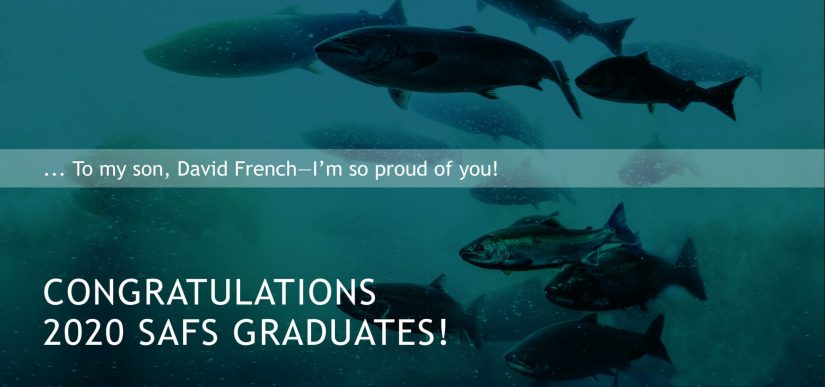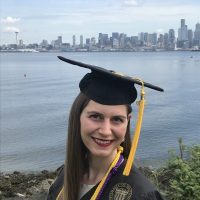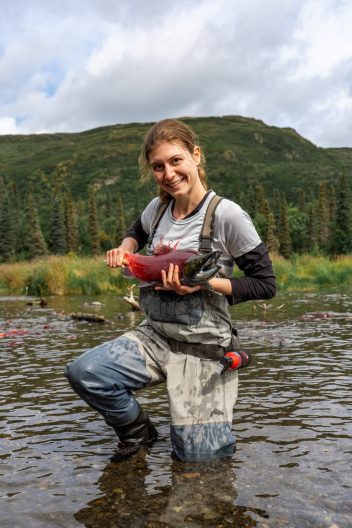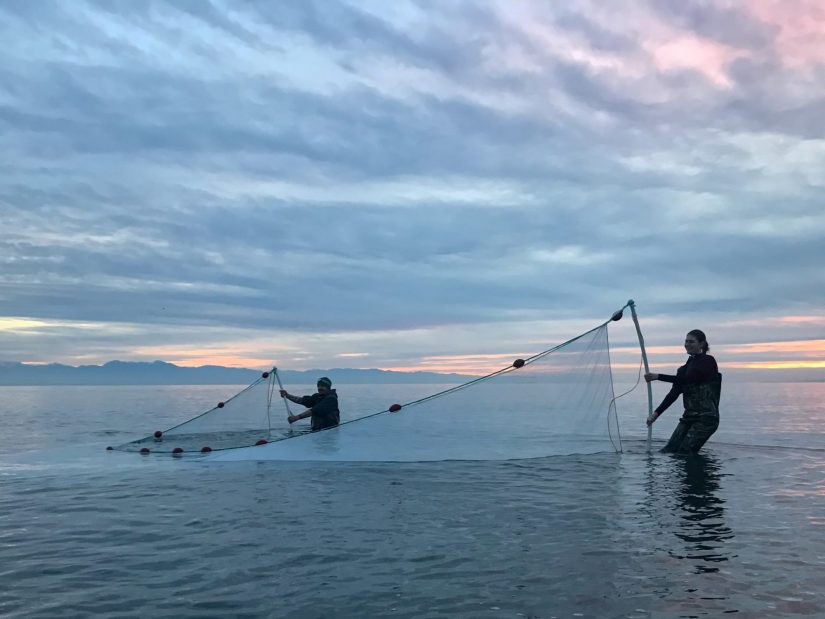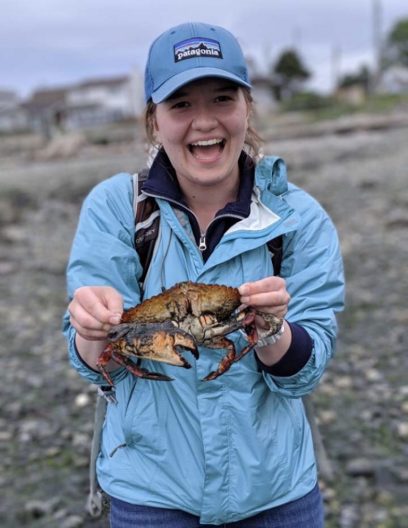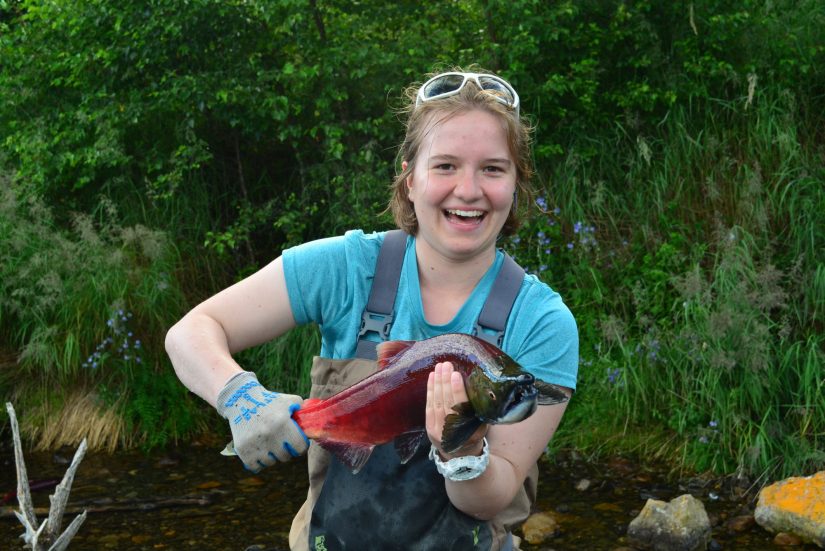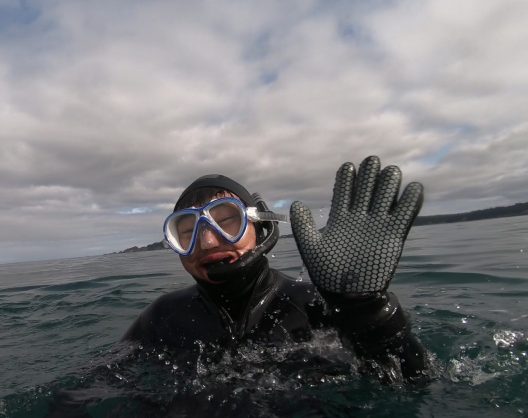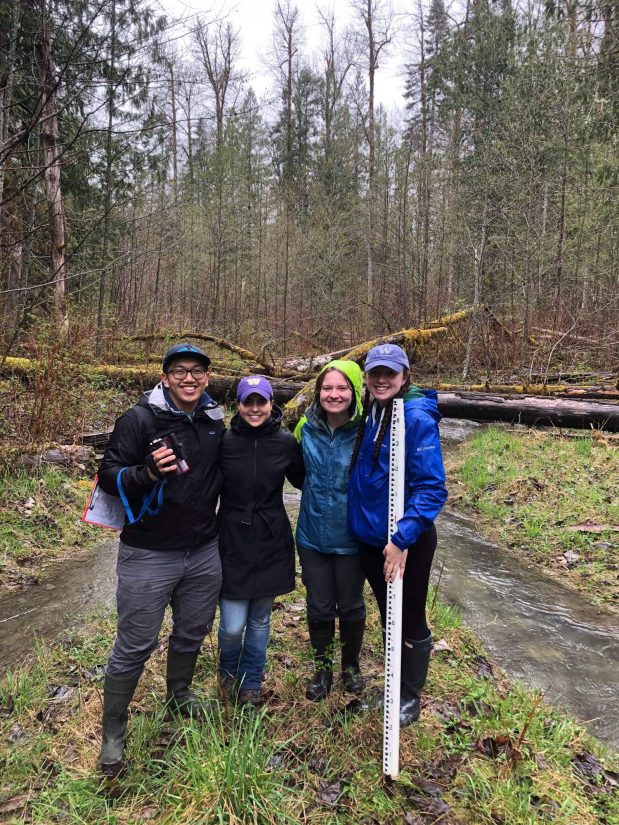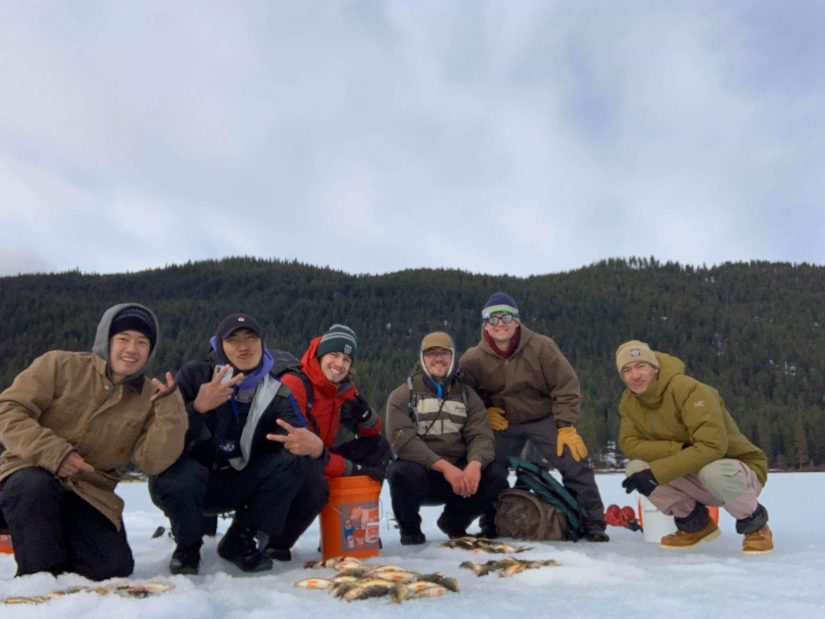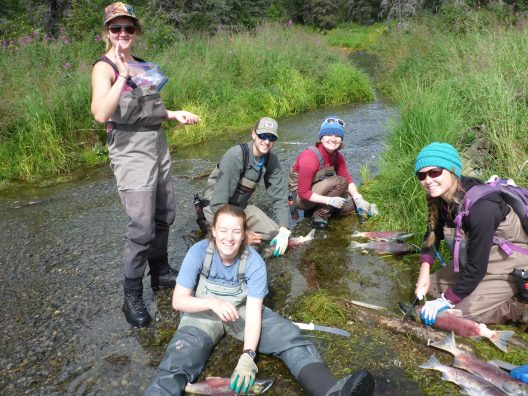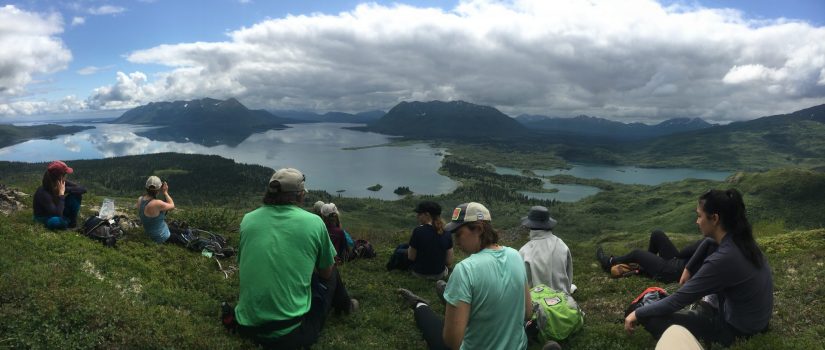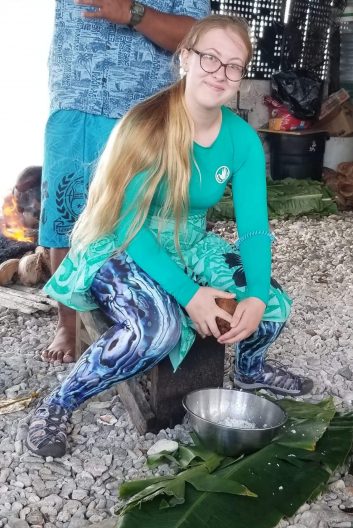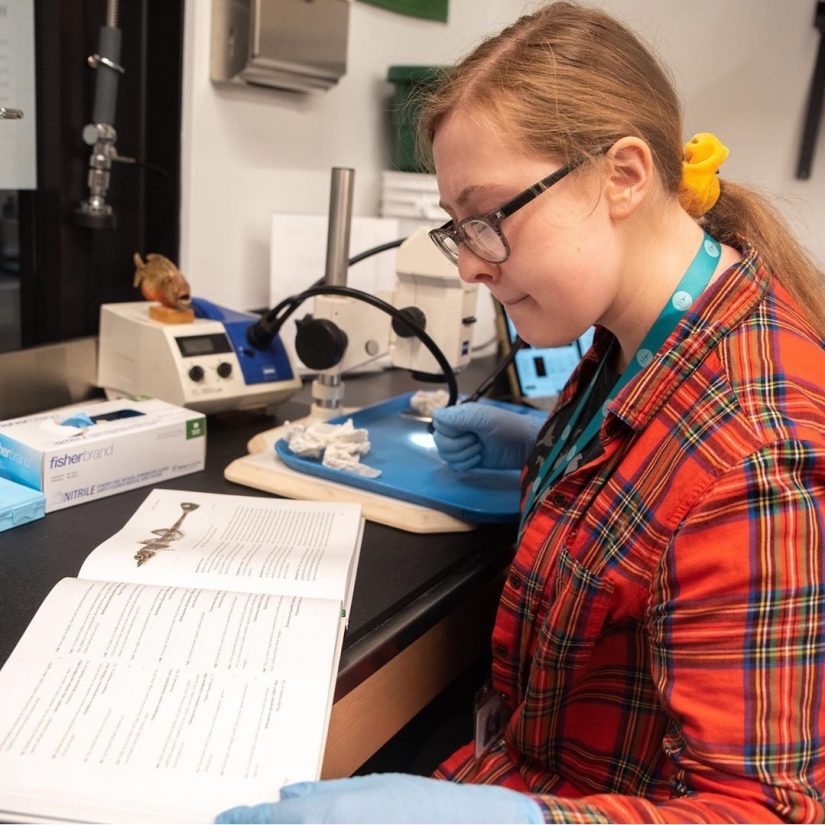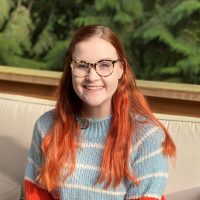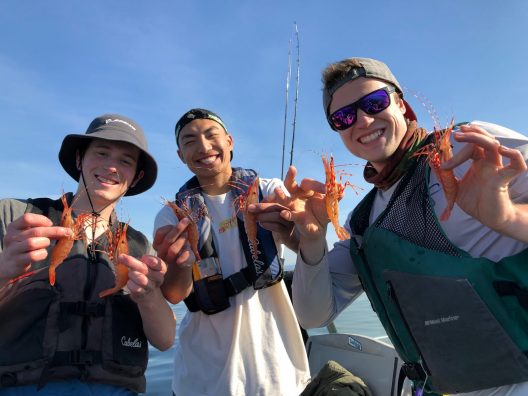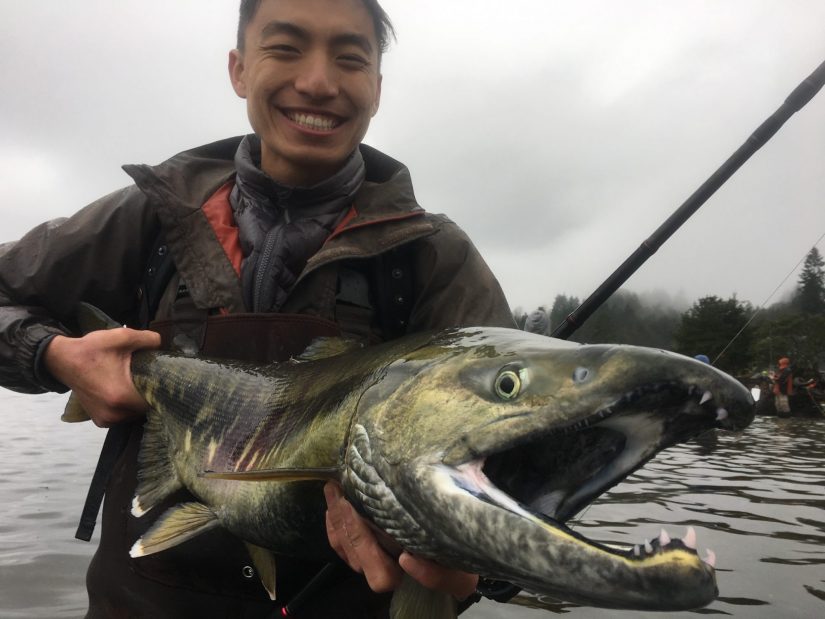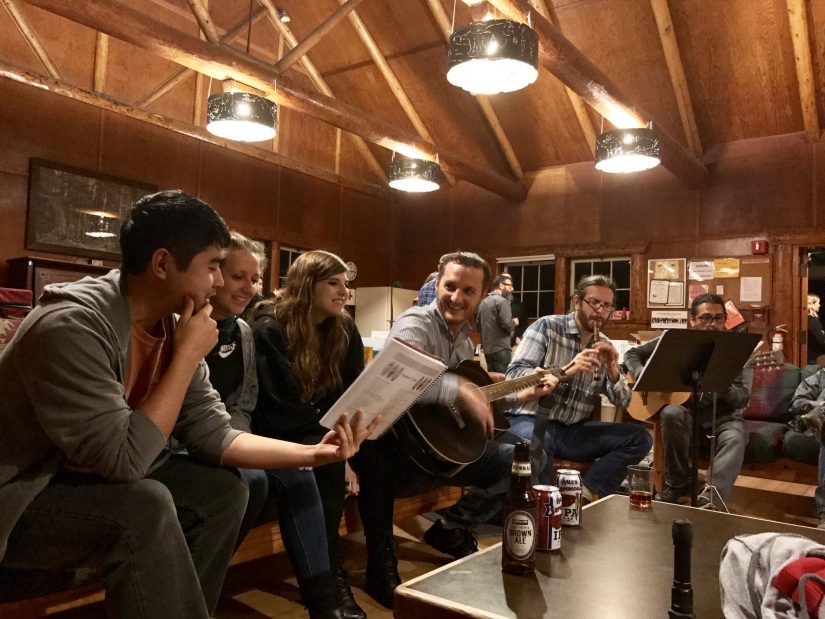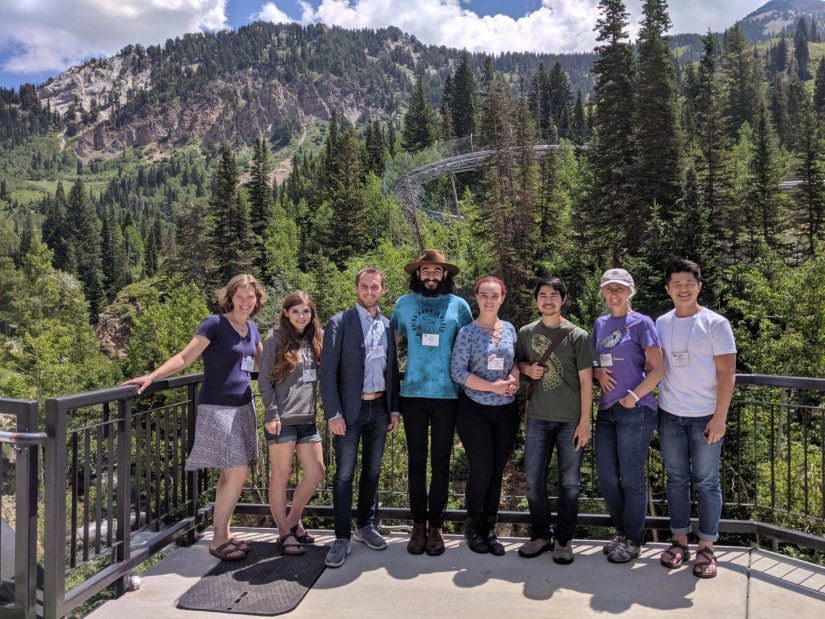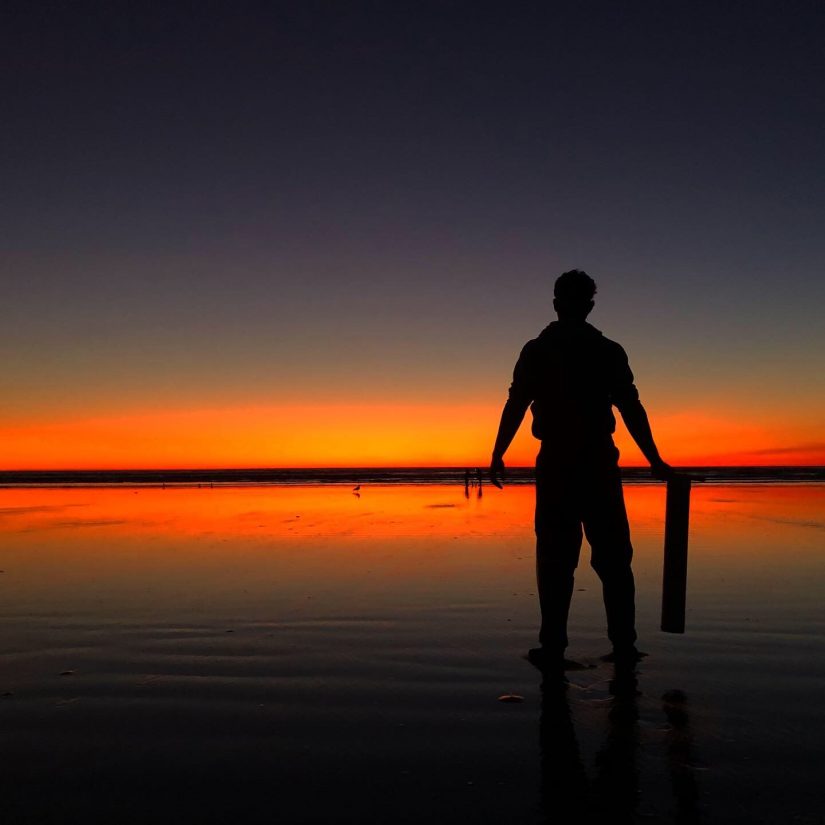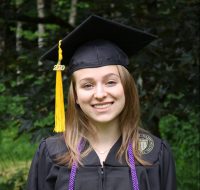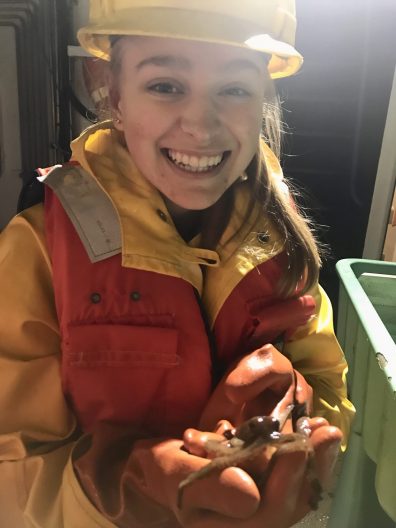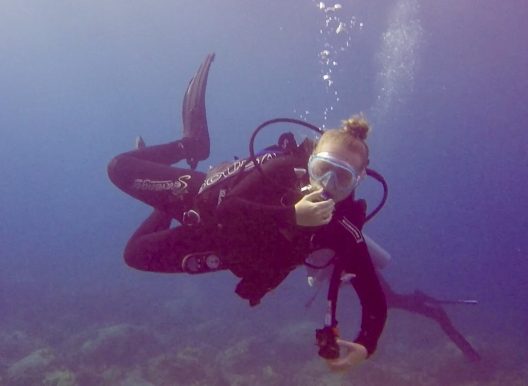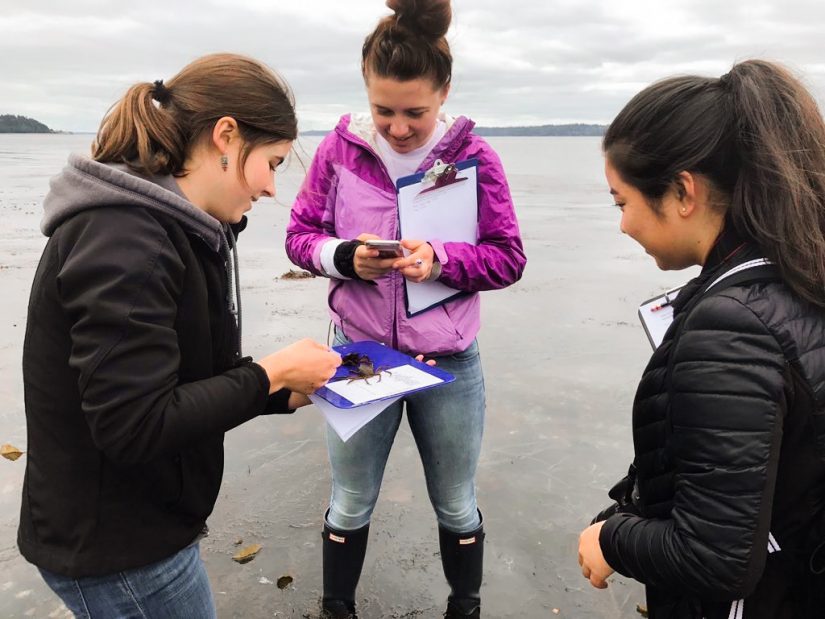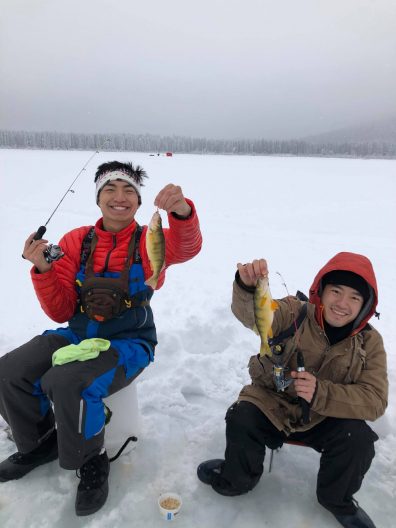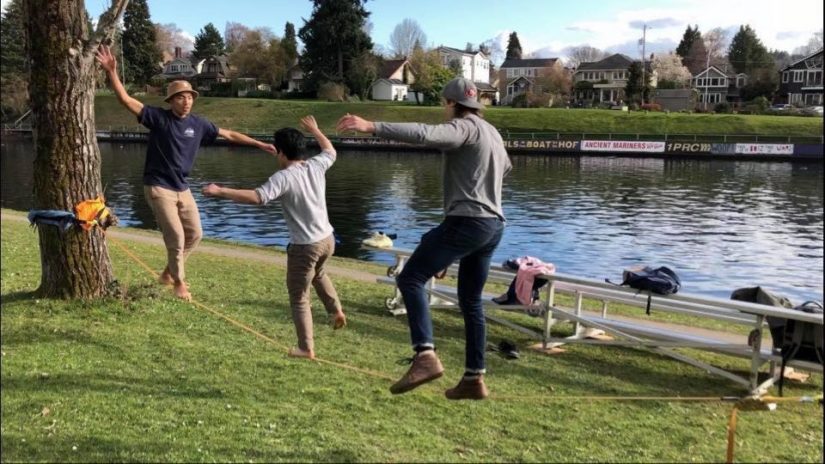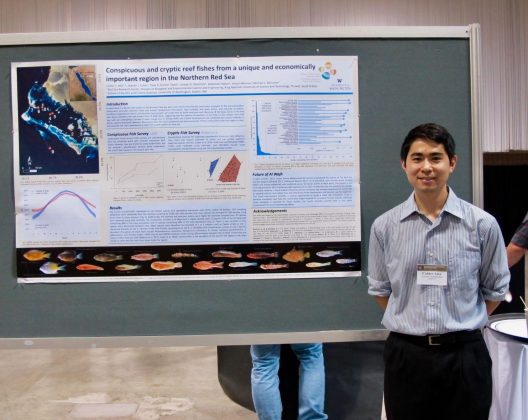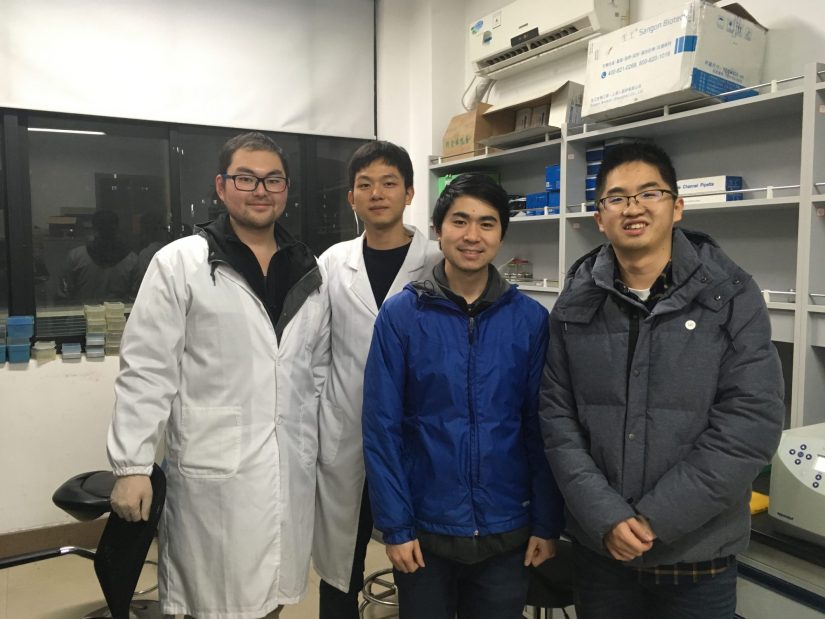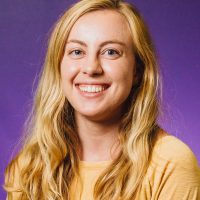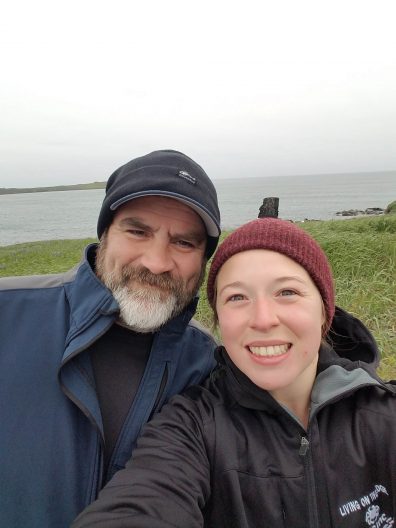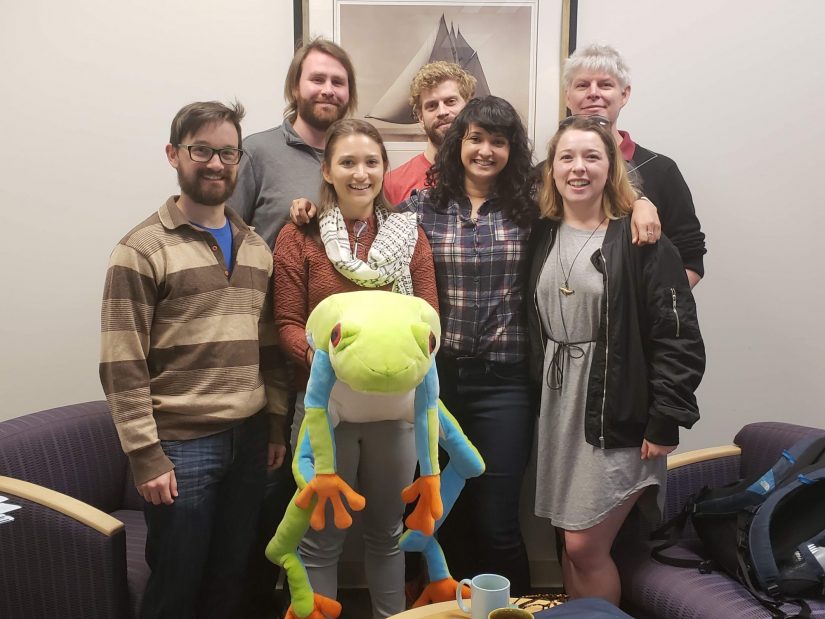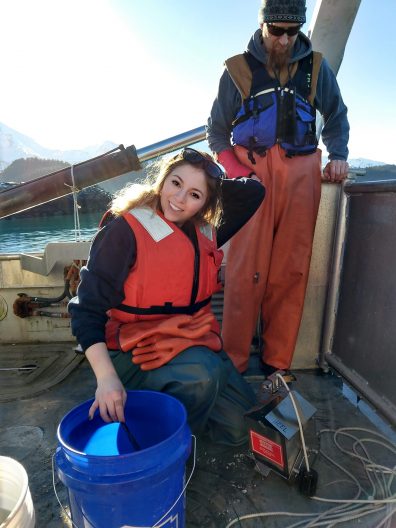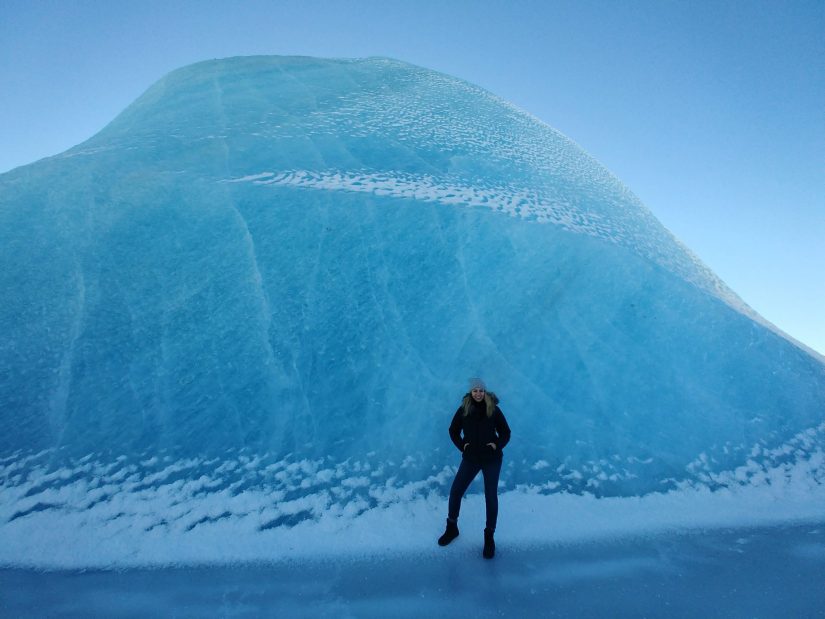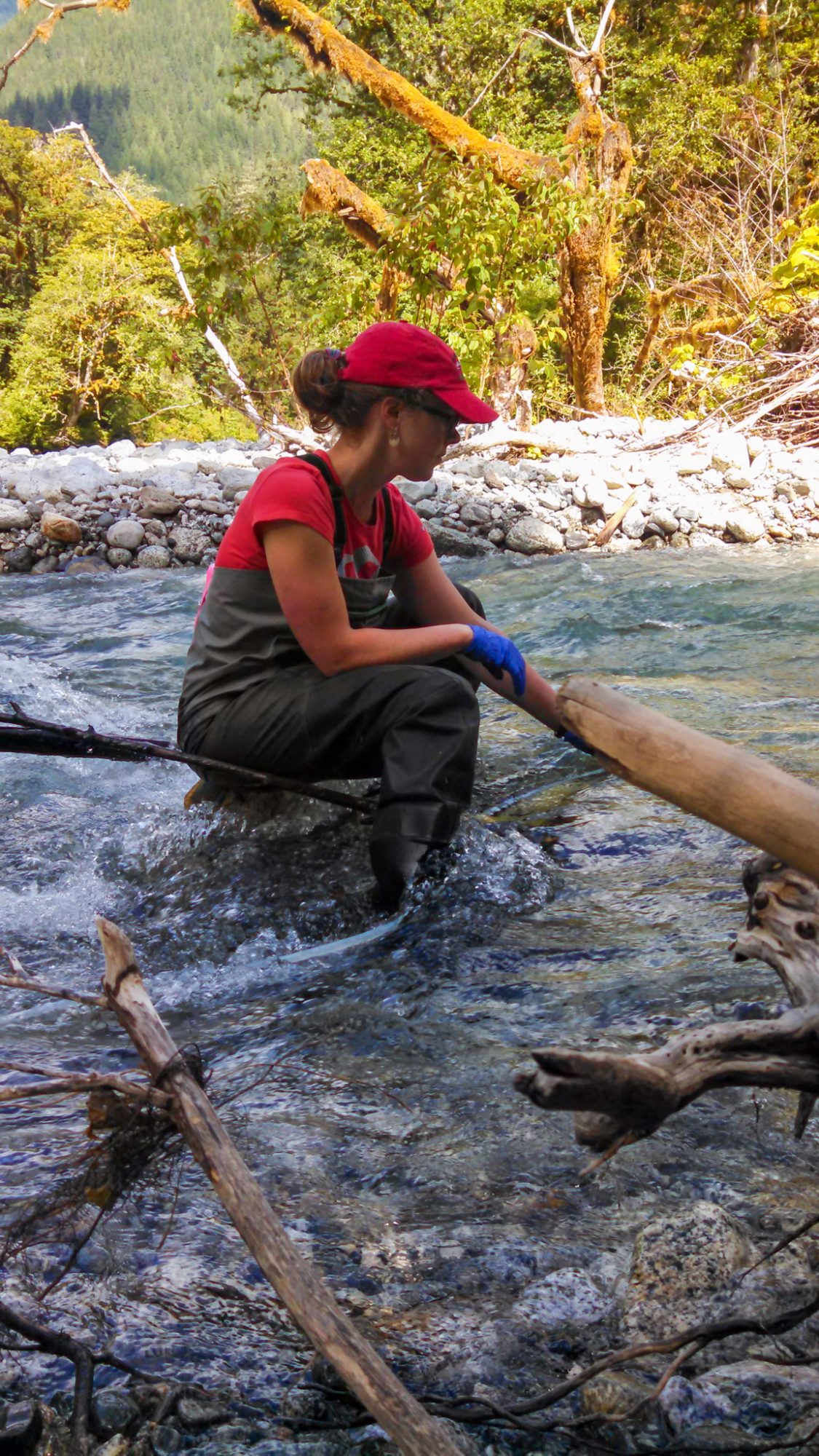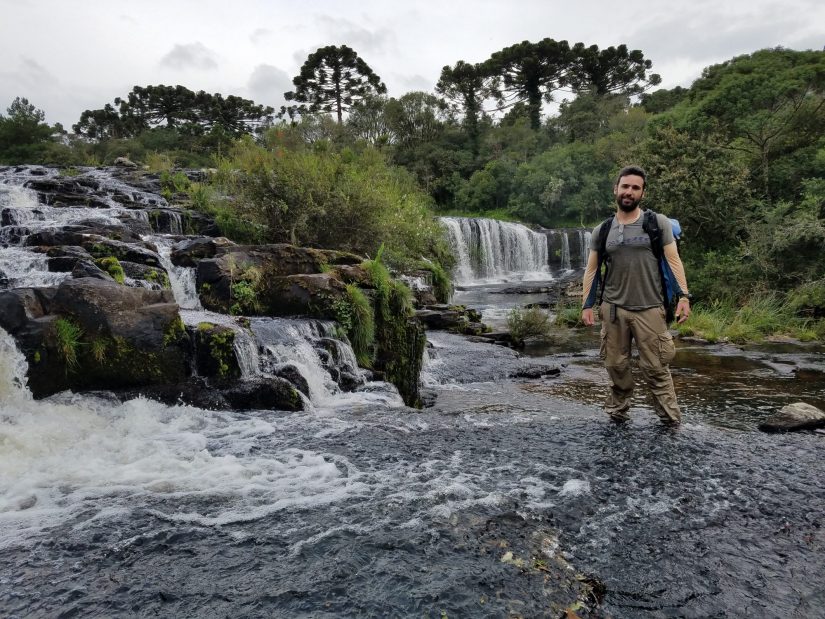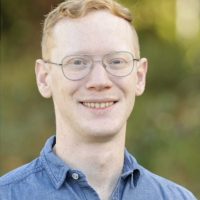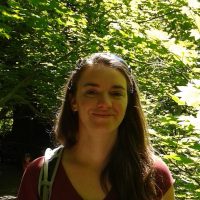Spring 2020 Graduation
Congratulations to our Fall 2019 and Winter/Spring/Summer 2020 graduating classes!
2020 will be remembered as the year we gave most of our classes remotely and everyone became experts in the use of ZOOM and numerous other online platforms. It will be impossible for us to conduct our traditional June graduation ceremony this year. However, that does not mean we don’t have a lot to celebrate. The students who are graduating from SAFS this year will, like our past graduates, take with them the unique experience of studying in an environment that provides students with a breadth of learning opportunities. I am very proud of this year’s graduates and look forward to hearing how they will impact our ability to understand, conserve and sustainably use aquatic environments.
André Punt
Director, School of Aquatic and Fishery Sciences
To celebrate this year’s class, we will be posting photos and anecdotes of our graduates on this page. Click a name below to expand and learn more about them or view our digital program.
Bachelor of Science
Kyla Bivens
Capstone Description
I exposed zebrafish embryos to stormwater runoff that was filtered through four different bioretention columns, columns filled with media such as sand and compost built to catch contaminants in the water filtered through it. We wanted to know if the different columns were effective at preventing the morphological defects that zebrafish embryos experience when exposed to unfiltered stormwater. This research was done in hopes to further the implementation of this clean water technology to preserve urban freshwater ecosystems.
What is your best/favorite memory during your time in SAFS?
I have many fond memories at SAFS. Some of my favorite times were just hanging out in the lobby between classes with my friends. I also had a blast on the FSH 312 field trips and my time spent at the Friday Harbor Labs.
What was your favorite FISH class and why?
I can’t pick just one! I loved FSH 323, FSH 311, FSH 312, and FSH 497 (Marine top predators). They were all very engaging subjects with fantastic professors and FSH 312 had multiple fun field trips.
What is your go-to comfort food?
Ice cream
Do you have any accomplishments and activities while at SAFS you would like to highlight?
Faculty Merit Award; SAFS Departmental Honors
Who would you like to thank/recognize and why?
Everyone who believed in me and helped to support me and made my graduation today possible. So this includes my family, the many faculty members who have mentored me, and a shout out to Sam Scherer! You saved me my freshmen year with your class suggestions and degree guidance.
Melinda Carr
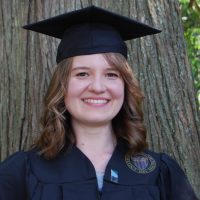 Capstone Description
Capstone Description
This capstone project analyzed juvenile rainbow trout and coho densities and how their populations respond to restoration work. Long-term monitoring data from three creeks, two of which received restoration and one was left alone, were used.
What is your best/favorite memory during your time in SAFS?
The Alaska Salmon Program and observing how much cream Dr. Hilborn consumes in a day.
What was your favorite FISH class and why?
All of them… but Fish 101 is the class that made me realize that my childhood passion is a career I can go into. Largest shoutout to Dr. Schindler and Dr. Olden for teaching me about the whole range of topics in fisheries!
What is your go-to comfort food?
WAFFLES!
What has been your favorite way to connect with friends and family during the COVID-19 quarantine?
Zoom happy hours
Who would you like to thank/recognize and why?
I would love to thank all of the wonderful human beings at SAFS. You guys gave me a family and community I never realized I was missing. Thank you to my friends and family for believing in me when I didn’t.
Andrew Chin
 Capstone Description
Capstone Description
I studied the life history and diet patterns of Dolly Varden from Bristol Bay, located in western Alaska. Dolly Varden are related to Pacific salmon and trout, so they exhibit similar anadromous migrations from fresh to saltwater, though some Dolly Varden may repeat migrations or may skip and cease migration altogether. I analyzed the chemical composition of their muscle and ear stones to determine when these fish migrated and what they were eating.
What is your favorite FISH class and why?
Fisheries ecology with Dr. Tom Quinn has been a foundation for my understanding and passion for ecology. Shout-out to parasite ecology taught by Dr. Chelsea Wood for uncovering the fascinating world of parasites and showing the clear connections between environmental and human health.
Do you have any accomplishments and activities while at SAFS you would like to highlight?
I was able to study plankton ecology off the Oregon coast and equatorial Pacific through summer research programs. In addition, I was a science communication fellow at Washington Sea Grant and part of the undergraduate environmental research journal FieldNotes since its inception. I was also recently awarded the College of the Environment Undergraduate Dean’s Medal!
Who would you like to thank/recognize and why?
Many thanks to all the SAFS faculty, especially Dr. Tom Quinn and Dr. Julian Olden, for their wisdom and guidance, and to my peers in SAFS and the College of the Environment for inspiring me every day. The biggest thanks to my family for their unending love and support throughout my college experience.
Ryan Horn
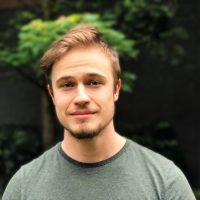 Capstone Description
Capstone Description
The diet of a population of Pacific herring infected with the microparasite Ichthyophonus was examined. Pacific herring in Cordova Harbor, Alaska, exhibited significantly higher infection rates than populations in other areas of Prince William Sound. Barnacle larvae in the diet contents appeared to correlate with the observed increase in infection during the month of May.
What is your best/favorite memory during your time in SAFS?
Showing up to classes with fishing poles and our professors loving it.
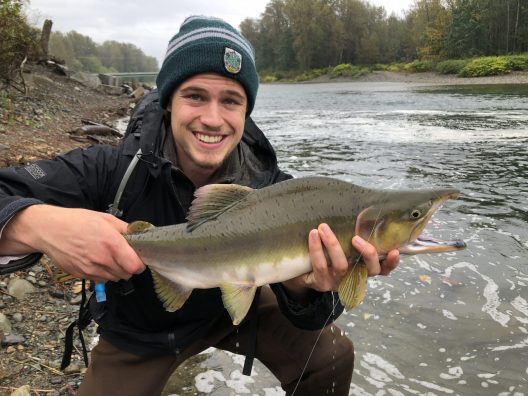 What was your favorite FISH class and why?
What was your favorite FISH class and why?
FISH 311 because I learned the most and I was able to work with many samples of fish I don’t normally come into contact with.
What is your go-to comfort food?
Sushi
What has been your favorite way to connect with friends and family during the COVID-19 quarantine?
Reminisce about previous fishing and camping trips over Facetime or Zoom.
Do you have any accomplishments and activities while at SAFS you would like to highlight?
Fishing before class and still managing to be on time to lecture.
Who would you like to thank/recognize and why?
Luke Tornabene for being a fantastic professor and an inspiration to us young fisher-folk. Chelsea Wood for being the most knowledgeable and approachable person I know. Catrin Wendt for being the best capstone mentor that anyone could ask for. Samantha Scherer for keeping me sane and recommending the best classes and courses of action.
Tyler Hoyt
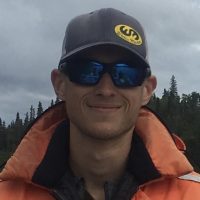 Capstone Description
Capstone Description
I quantified how much juvenile steelhead moved on an hourly basis and when they are most active on the Hoh River. I found that smaller steelhead moved more than larger steelhead, regardless of whether they were wild or hatchery-origin. I also found that when they were most active was highly individualized.
What is your best/favorite memory during your time in SAFS?
The Alaskan Salmon Program
What was your favorite FISH class and why?
The Alaskan Salmon Program because of all the hands-on experience, the three great professors who shared their knowledge, and the other students who made it fun.
What is your go-to comfort food?
Turkey pot pie
Raegan Jarvis
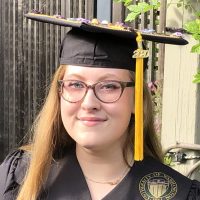 Capstone Description
Capstone Description
Burrowing activity of ghost shrimp in Willapa Bay has softened sediments of oyster beds for decades, leading to low oyster yields and an economic state of emergency for Pacific County. Our team has investigated table salt as green alternative pesticides for inducing juvenile shrimp mortality for the past few years. My part of the project focused on the movement of table salt solution through sediment to understand physical forces impacting the efficacy of this treatment.
What is your best/favorite memory during your time in SAFS?
Watching the movie Chelsea Wood made of all her FISH 312 students on our three field trips. Literal tears.
What was your favorite FISH class and why?
FISH 311. Fish biology is fascinating, and poking dead fish is surprisingly fun!
What is your go-to comfort food?
Teriyaki burger.
Do you have any accomplishments and activities while at SAFS you would like to highlight?
SeaDawgs Marine Biology Club President 2019-2020. Participant of the first PAC-ISLEs trip to American Samoa, Summer 2019. Most Likely to Succeed in Identifying a 6-mm Goby.
Who would you like to thank/recognize and why?
My family, friends, professors and SAFS staff who have supported me every step of the way.
Bailey Johnson
Capstone Description
Testing the rates at which abalone shed a deadly bacterium through their feces in response to varying water temperatures.
What is your best/favorite memory during your time in SAFS?
Reconnecting with like-minded individuals and exploring the marine environment in every class.
What is your go-to comfort food?
Mac n Cheese
Do you have any accomplishments and activities while at SAFS you would like to highlight?
Due to my time at SAFS and the opportunities my degree has given me, I am now working in my dream job at the Seattle Aquarium!
Who would you like to thank/recognize and why?
Sam Scherer: For always being an incredible resource and for encouraging me to follow my dreams!
My family: For giving me the opportunity to attend SAFS and for supporting me through this whole adventure!
Raegan Jarvis: For being a wonderful role model/tutor and best friend; my UW experience would have been severely lacking if you weren’t in it!
Spencer Kubo
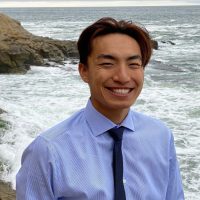 Capstone Description
Capstone Description
Analyzed the effects reintroduction of salmon had on resident trout populations following the implementation of a fish ladder at the Landsburg Dam. The study analyzed both total diet counts and proportions of specific taxa.
What is your best/favorite memory during your time in SAFS?
My favorite memory was the Marine Bio field trip to Friday Harbor Labs. That was where I became close to my best friends in college. It also introduced me to the amazing diversity of marine creatures present in the Pacific Northwest.
What was your favorite FISH class and why?
My favorite class was either Waters and Society or Aquaculture. These classes were both incredibly informative and interesting. I learned so much about the importance of water in our everyday lives as well as our environmental impacts through daily activities. Aquaculture taught me how various shellfish and finfish aquaculture operations are run.
What is your go-to comfort food?
Steak
What has been your favorite way to connect with friends and family during the COVID-19 quarantine?
Probably facetime. But I really don’t like video calls.
Do you have any accomplishments and activities while at SAFS you would like to highlight?
I am proud of my fish catching accomplishments during my time in SAFS. I learned so much about fishing from my friends and was able to accomplish my goal of catching all the pacific salmon (excluding sockeye) in my college career.
Who would you like to thank/recognize and why?
I would like to thank all my professors for their genuine interest in the topics they teach and their approachability. I can honestly say I never disliked a single one of my SAFS professors. I would also like to thank my Fisheries BUDS!
Emily McFarland
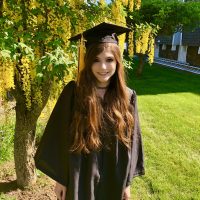 Capstone Description
Capstone Description
Description of a new species of damselfish (genus Chromis) from deep reefs in the Greater Caribbean
What is your best/favorite memory during your time in SAFS?
Singing and playing instruments with my lab mates around a fire at the annual Gilbert Ichthyological Society meeting
What was your favorite FISH class and why?
Fish 311. I met my advisor, joined his lab, and joined SAFS. I realized that there was an entire community of people like me. It opened the door for me to find my place for the first time in my life and see a future for myself. Oh, and I like fishes.
What is your go-to comfort food?
Taro bubble tea milkshakes
What has been your favorite way to connect with friends and family during the COVID-19 quarantine?
Playing video games together
Do you have any accomplishments and activities while at SAFS you would like to highlight?
I presented at JMIH following my sophomore year, presented at GIS at the start of my senior year, was granted a scholarship to take a two-week course in Japan, was extremely involved in outreach, attended 5 conferences, and described a new species.
Who would you like to thank/recognize and why?
Luke Tornabene and Katherine Maslenikov, for guiding me along this massive journey and welcoming me into the first place I’ve ever truly felt like I belonged. It wouldn’t be an overstatement to say you two, my lab mates, and this community as a whole saved my life. Thank you for giving me the opportunity to find my purpose in this world, for cheering me on, and helping me keep my head held high.
Daisey Newman
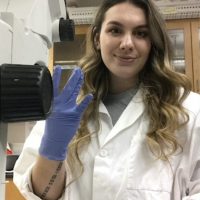 Capstone Title
Capstone Title
Testing the new enemy hypothesis in European green crabs (Carcinus maenas) on the West Coast
Cindy Nguyen
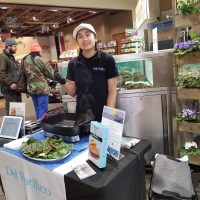 Capstone Description
Capstone Description
I conducted product demonstrations for Del Pacifico Seafoods’ sustainable blue shrimp and collected survey responses to speculate possible consumer misconceptions about shrimp and why they may be deterred from eating seafood in general.
What is your best/favorite memory during your time in SAFS?
Forming friendships in class and going on field trips
What was your favorite FISH class and why?
FISH 270—Aquatic and Ecophysiology—Professor Roberts and Professor Guzman were a great team, creating an engaging and memorable class that I wish I could take again, just for fun!
What is your go-to comfort food?
Ice cream
What has been your favorite way to connect with friends and family during the COVID-19 quarantine?
Video calling and playing games together
Who would you like to thank/recognize and why?
I would like to thank Professor Chris Anderson for his guidance and insight throughout my capstone project, despite difficult and unique circumstances. I learned quite a lot about the process of creating and conducting surveys, and the associated analyses that can help bring out meaningful information.
Kahana Pietsch
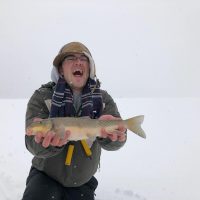 Capstone Description
Capstone Description
My research seeks to better understand the specifics of how abalone withering syndrome, a deadly bacterial disease of abalone, transfers between animals. We exposed healthy abalone to this disease in the lab using a number of combinations of possible transmission pathways and then monitored animals for signs of disease for several months afterwards to determine which treatments led to the highest rates of infection.
What is your best/favorite memory during your time in SAFS?
All the time spent fishing, hiking, and exploring the region and the aquatic organisms that call it home both in and out of the classroom with the great friends I’ve met through my time here. Too many funny and fascinating times in all the labs and field trips over the years to count.
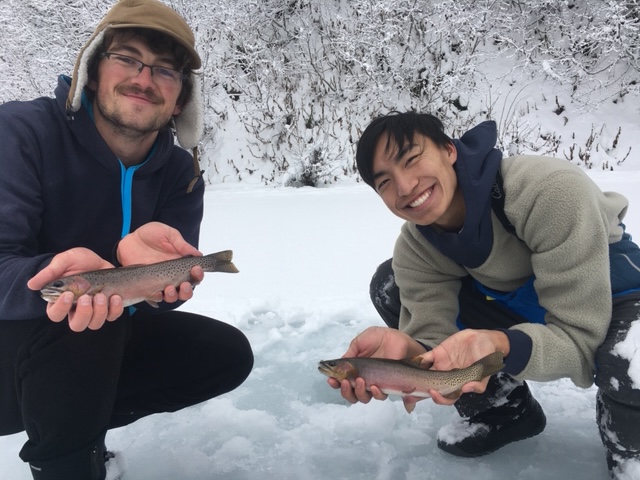
What was your favorite FISH class and why?
Too many to choose from! I’d be harder pressed to think of a FISH class that ISN’T a contender, the staff in this department are super passionate about what they teach and it shows!
What is your go-to comfort food?
Smoked ratfish fillet
What has been your favorite way to connect with friends and family during the COVID-19 quarantine?
Sending fish pics
Do you have any accomplishments and activities while at SAFS you would like to highlight?
Graduating with college honors
Who would you like to thank/recognize and why?
I have so much to be thankful for from so many people in this department. I’d like to thank all of the staff and students who I had the pleasure and privilege of sharing a classroom with, but especially Carolyn Friedman, Bryanda Wippel, and my fellow undergrads who I’ve worked with in the Friedman labs for all they’ve taught me about what it means to be a researcher in this field. I’d also like to thank all the other folks I’ve met here who’ve been my friends and helped me in both school and life these last 4 years, I seriously could not have made it through without you all.
Jessica Quinn
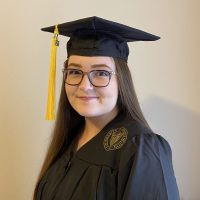 Capstone Description
Capstone Description
Using a data set collected in 1969 by Dr. Armand Kuris, our study investigated the change over time in parasites found in shore crabs along the West Coast by retracing the very same steps Dr. Kuris took on the beach over 50 years ago.
What is your best/favorite memory during your time in SAFS?
My favorite memory during my time in SAFS was going on the electrofishing field trip for Fish Ecology! It was so much fun to get out into nature and it was a very valuable hands-on learning experience. Being able to work in a team with classmates who are just as eager and excited as you are is the best feeling!
What was your favorite FISH class and why?
My favorite FISH class was Parasite Ecology. This class drastically changed my idea of what I wanted to do after college and made me want to pursue research that involved parasites!
What is your go-to comfort food?
All of the chocolates!!!
Who would you like to thank/recognize and why?
I would like to thank Chelsea Wood and all of the members of the Wood Lab. They have all been such wonderful mentors and friends to me during my time at SAFS, and I was so excited to work alongside them each day. I have learned so much from the Wood Lab, and I am so thankful for the time I spent with everyone!
Kylie Sahota
Capstone Description
This project looked at the impacts of proposed burrowing shrimp control methods involving table salt on juvenile Dungeness crab, an ecologically and economically important species to our region. Overall, more testing is necessary to find an application method using table salt which provides effective burrowing shrimp control without harming the juvenile Dungeness crab.
What is your best/favorite memory during your time in SAFS?
Holding an octopus on the FISH 312 RV Rachel Carson research cruise!
What is your go-to comfort food?
Dark Chocolate
What has been your favorite way to connect with friends and family during the COVID-19 quarantine?
Cooking meals and reflecting on each day together
Who would you like to thank/recognize and why?
Thank you to my family, friends, and mentors for their support. I couldn’t have done it without you and will forever cherish my time in SAFS!
Angel Sar
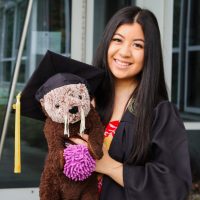 Capstone Description
Capstone Description
This study compares the individual feeding habits of two northern fur seals in 2017 from St. Paul Island, Alaska, using video cameras mounted on their backs. Results acquired from this study will contribute to a larger-scale prey capture behavior and foraging study conducted by NOAA’s Marine Mammal Lab.
What is your best/favorite memory during your time in SAFS?
It’s hard to pick just one because I loved all the amazing field trip opportunities that were offered, but going behind-the-scenes at the Point Defiance Zoo and Aquarium was so much fun. It was great getting up close and personal with the marine mammals and reminded me of why I chose this field in the first place.
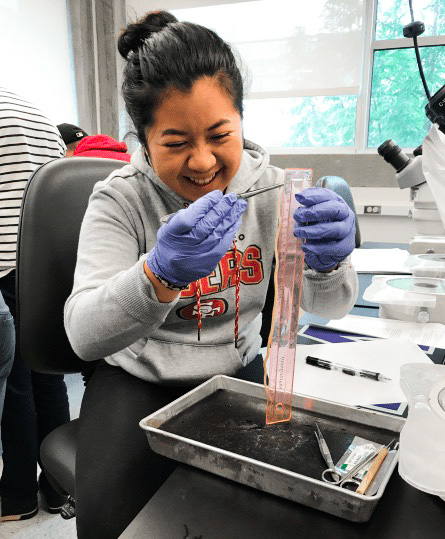
What was your favorite FISH class and why?
FISH 464 and 475 were two of my favorite classes. Through both of them, I was able to learn so much about marine mammals and that only pushed me to pursue marine mammalogy further. Added bonus: marine mammals are the cutest. FISH 406 was also so much fun, the labs were the best part.
What is your go-to comfort food?
Ben & Jerry’s Chunky Monkey ice cream
What has been your favorite way to connect with friends and family during the COVID-19 quarantine?
Game nights over Zoom
Do you have any accomplishments and activities while at SAFS you would like to highlight?
Officer for SeaDawgs; working in the Padilla-Gamino and Wood Labs; volunteering for NOAA’s Marine Mammal Lab, Seattle Aquarium, PAWS, Seal Sitters; SAFS Undergraduate Recruiting scholarship, SAFS Continuing Student scholarship
Who would you like to thank/recognize and why?
I would like to thank Sam Scherer for being the best adviser there ever was. Sam has been so helpful to me since I started inquiring about SAFS in high school and since then, she has been there for me every step of the way. From helping me declare my major the second day of freshman year to submitting a graduation application, she has always been so kind and supportive. Also, she has candy in her office. 😉
I would also like to thank Lindsay Alma. Lindsay was my TA in the first class I ever took at UW (FISH 250) and she’s been so awesome to me ever since. Lindsay has helped me out so much, and I’m grateful for all the opportunities she’s provided me with as well as her friendship.
Dr. Chelsea Wood has been the most incredible professor I’ve had at SAFS, and everything about her is amazing. I am so happy to have taken a couple of her classes and been able to get to know her. Thank you Chelsea for always being so supportive and baking the best cookies.
Thank you to Dr. Kristin Laidre for taking me on as a capstone student in addition to her already busy schedule. I appreciate having her as an adviser on my project and value her input deeply, as she has long been one of my role models. Also thank you to the rest of the Laidre lab group for being so nice and friendly; it was great to have some of you as TAs even.
Rory Spurr
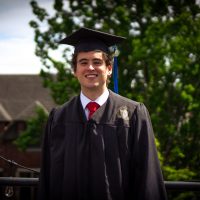 Capstone Description
Capstone Description
Looked at genetic differentiation between populations of Pacific cod throughout their range in the Pacific Ocean. Differences we found at the gene in question suggest the possibility of non-interbreeding subpopulations. The knowledge gained from this study is critical to the sustainable exploitation of Pacific cod.
What was your favorite FISH class and why?
FISH 311 – Biology of Fish. FISH 311 had one of the most hands-on and fun lab experiences I had at UW. It was interesting to see the wide array of fish species and UW’s fish collection was very impressive and neat.
What is your go-to comfort food?
Mac n’ Cheese
What has been your favorite way to connect with friends and family during the COVID-19 quarantine?
Happy hours over zoom
Who would you like to thank/recognize and why?
I would like to thank my mom and dad for the immense amount of support they have given me throughout my time at UW.
Kentaro Yoshikawa
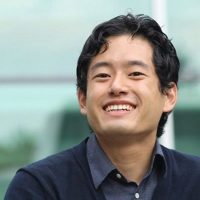 Capstone Description
Capstone Description
Thailand used to be one of the top producers of farmed shrimp, but declined in production in the past decade. Using econometric tools and machine learning, I analyzed the economic factors that contribute to shrimp production, and how we predict aquaculture will grow in the future.
What is your best/favorite memory during your time in SAFS?
Meeting my fishing buddies
What was your favorite FISH class and why?
FISH 230. It covers the economic side of fishery science which isn’t taught too much in other courses. It’s the class that inspired me to pursue a double degree in economics.
What is your go-to comfort food?
Dick’s Cheeseburger
What has been your favorite way to connect with friends and family during the COVID-19 quarantine?
Tagging my friends in memes
Do you have any accomplishments and activities while at SAFS you would like to highlight?
Ted Steven Scholarship Award from North Pacific Fisheries Association
Who would you like to thank/recognize and why?
My father, who inspired me to pursue this field since I was a child. My mother, who supported me even when I was making questions and always loved me. My SAFS bois who made my 4 years at SAFS so enjoyable and for our countless memorable and meme-able fishing trips.
Master of Science
Morgan Arrington
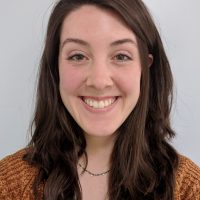 Thesis Description
Thesis Description
There is a degree of variability we expect in growth and the timing of maturation among individuals within a single species, but sometimes the variability we observe is structured spatially due to external factors such as environmental conditions. Exploring spatial variability in life history is important because it can have implications for how we understand a species’ population dynamics and inform management decisions. My thesis focused on exploring whether there are spatial patterns in the growth and timing of maturity of Longnose Skates along their large geographic range from the Gulf of Alaska to Southern California to inform stock assessment and management.
What is your best/favorite memory during your time in SAFS?
Holiday basket competitions! SAFS has a tradition where each lab creates a themed holiday basket that then gets voted on and auctioned off at the annual holiday party. Even though the Essington lab has not (yet!) tasted victory, I loved the time being creative and hanging out with my lab-mates.
What was your favorite FISH class and why?
Marine Conservation and Management – I really enjoyed the course material as well as the opportunity to work with my advisor Dr. Tim Essington as his TA and to get to know a class full of wonderful undergraduate students working toward marine biology and fisheries majors.
What is your go-to comfort food?
Mac ‘n Chee!
What has been your favorite way to connect with friends and family during the COVID-19 quarantine?
I’ve loved using Marco Polo (which is a video messaging app) to catch up, and most importantly, see videos of all my favorite animals (shout out to Grace, Della, and several of Steph’s foster dogs!)
Who would you like to thank/recognize and why?
Thank you to my wonderful advisor, Tim, and my committee members, Beth Matta, Thomas Helser, and André Punt for all of their thoughtful input and support. And thank you also to all of my friends and family—I am the luckiest lady to be surrounded by such incredible and inspirational people!
Calder Atta
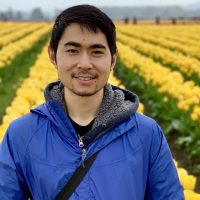 Thesis Description
Thesis Description
Evolutionary relationships of the flatfishes are inferred using a comprehensive genome-wide dataset to address a complex history of disagreement between studies that has spanned more than a century.
What is your best/favorite memory during your time in SAFS?
Getting to witness sea ice, polar bears, and the aurora borealis from aboard the research icebreaker USCGC Healy
What was your favorite FISH class and why?
FISH/BIOL 311 – Fish Biology (Teaching as a TA); I was able to learn so much more through teaching than through taking classes and the students were great.
Do you have any accomplishments and activities while at SAFS you would like to highlight?
Receiving an award (from the H. Mason Keeler Endowment for Excellence) in order to travel to Hakodate (Japan) to do a case-study on a fishery-dependent town and try to find ways to respond to problems caused by its shrinking population.
Who would you like to thank/recognize and why?
NOAA Alaska Fisheries Science Center for the archival grant funding my studies; Colleagues from here at SAFS and UW, NOAA, Shanghai, The University of Delaware, and the numerous fish collections for vital contributions to my research; All my family/friends based in both Seattle and Hawaii for moral support.
Grace Crandall
Thesis Description
Ocean warming as a result of climate change is a global threat, and it’s important to understand how marine organisms will physiologically respond to increased temperature conditions before it’s too late. Focusing on Pacific oysters and Alaska Tanner crabs, I used “omics” methods to investigate how temperature stress impacts shellfish physiology, and in the process of investigating that topic, we were able to assemble genomic resources for Alaska Tanner crabs for use in the scientific community.
What is your best/favorite memory during your time in SAFS?
SEAS Open House! It was such a fun way to open up our department to the community. So fun to interact with kids and get them excited and engaged in science!
What was your favorite FISH class and why?
FISH 507B Spring 2018 – “Outreach in Aquatic and Fishery Sciences to Diverse Audiences,” led by Isadora Jimenez and 4 graduate students: Sean Rohan, Katie McElroy, Yaamini Venkataraman, and Catherine Austin. This course comprised 4 main goals: (1) understand and practice core concepts and language around diversity, equity, and inclusion in the sciences and in scientific education; (2) think critically about the academic and philosophical context for why outreach matters; (3) demonstrate communication skills through group discussion and outreach activity generation; and (4) develop and lead outreach activities in aquatic and fishery sciences with middle school students from communities historically faced with barriers to participation in sciences in mind. We had group discussions, readings, and guest speakers, and each of those facets of the class contributed so much to my learning. I loved this class and I hope that this and more diversity, equity, and inclusion education for graduate and undergraduate students at SAFS continues to become a bigger component of the curriculum!
What is your go-to comfort food?
Tacos!
What has been your favorite way to connect with friends and family during the COVID-19 quarantine?
Group zooms and Marco Polo app!
Who would you like to thank/recognize and why?
My parents, siblings, and my boyfriend Tom for all of the encouragement, love, and support! Also, Steven Roberts and all past and present members of the Roberts lab – a great environment to grow as a scientist and person! And the graduate student community for being welcoming and amazing!
Davey French
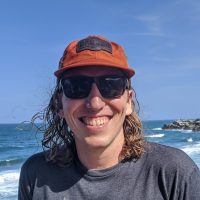 Thesis Description
Thesis Description
Streamwater chemistry reflects both watershed features such as geology and landcover and instream processes such as microbial metabolism; however, the balance of these factors has not been quantified at the river network scale. My research employs spatial stream network models that explicitly account for river network topology and downstream transport processes to examine spatial patterns in streamwater constituents that form the base of aquatic food webs. I also use these tools to assess mercury contamination in fish from a large boreal river network, where subsistence communities rely on fish as a primary protein source.
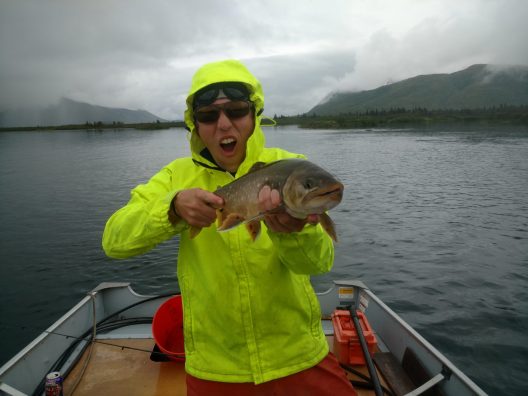
What is your best/favorite memory during your time in SAFS?
Flying around sampling the Kuskokwim River in a helicopter.
Go-to comfort food
Anything Mexican
Who would you like to thank/recognize and why?
My family for their years of encouragement and my wife Cori for her emotional labor and patience.
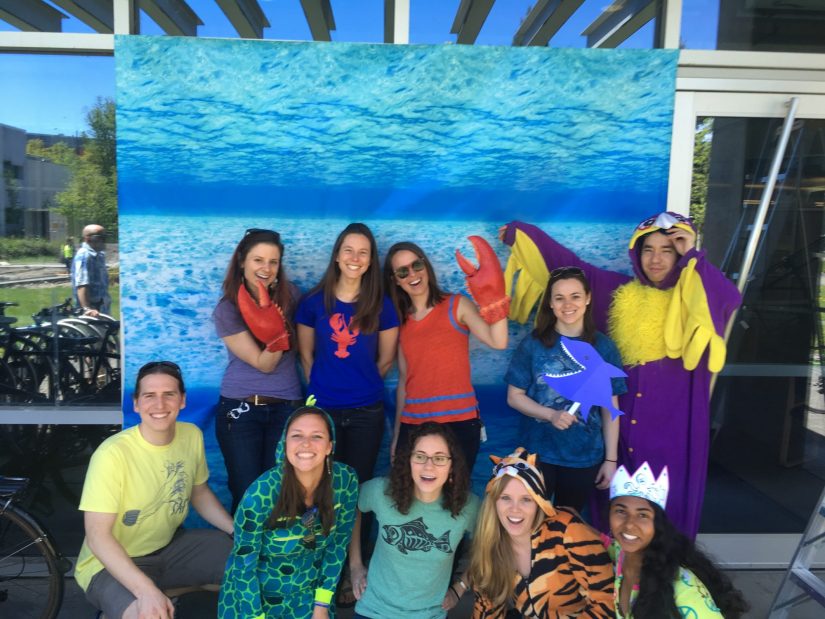
Madison Heller-Shipley
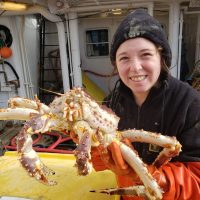 Thesis Description
Thesis Description
Madison’s work centered on a management strategy evaluation of Eastern Bering Sea Tanner crab, where different levels of harvest and associated population dynamics were modeled based on either male only, female only, or male and female control rules. Results were presented to managers in Alaska to inform decision makers when selecting a new rule to set exploitation on Tanner crab in the Bering Sea.
What is your best/favorite memory during your time in SAFS?
Having my work result in updated Tanner crab management in Alaska
What was your favorite FISH class and why?
FISH 559. This is one of André’s classes, and while it is an incredibly difficult and not particularly “fun” class, when I took it my second year it showed me how much I had grown in a year of graduate school. It was foundational for my confidence in population dynamics.
What is your go-to comfort food?
Mac N Cheese
What has been your favorite way to connect with friends and family during the COVID-19 quarantine?
Playing online-based games and parties! I find I talk on the phone more as well!
Do you have any accomplishments and activities while at SAFS you would like to highlight?
My work updated management for crab in AK, I became a L3 in Krav Maga, and last Septembe,r I married my best friend, who I met at SAFS in undergrad.
Who would you like to thank/recognize and why?
I’d like to thank my husband Charlie, for helping me through the toughest parts of the graduate process and always making me laugh, my best friend Ashley who helped with everything from moral support to thesis related troubleshooting, my parents for always believing in me and supporting me the whole way, to my lab mates and fellow cohort members who were all on this grad school journey with me and all wonderful, my boss Scott for pushing me to actively change management in a cooperative framework and helping to make it possible, the BSFRF for funding me, and André for setting the bar higher than I thought possible and helping me reach it.
Kamaluddin Kasim
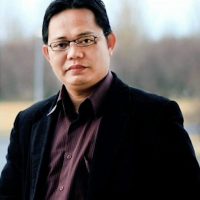 Thesis Title
Thesis Title
Fishery performance indicators (FPIs) and production analysis: What works before and after the ban of Cantrang trawl fishery in the Java Sea, Indonesia?
Catrin Wendt
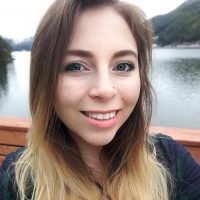 Thesis Description
Thesis Description
I formally identified a hot spot of Ichthyophonus disease transmission in herring from Alaska and investigated possible mechanisms to explain this pattern.
What is your best/favorite memory during your time in SAFS?
Visiting the Sheridan glacier in Alaska during field sampling and serving as a strike captain during the 2018 UAW 4121 strike.
What was your favorite FISH class and why?
Biology of Shellfishes! As the TA, I had the privilege to teach our curious and engaged SAFS undergrads. I am grateful for the chance to be part of their learning journey here at SAFS. Class highlight? A demo from our class made the front page of Reddit!
Do you have any accomplishments and activities while at SAFS you would like to highlight?
During my time at SAFS, I grew as an activist. I also co-founded a fossil fuel divestment coalition at UW and was awarded funding from the Campus Sustainability Fund and College of the Environment for the project! I was also active in our union leadership as our union’s Defense Secretary and the local SAFS Steward.
Who would you like to thank/recognize and why?
I want to thank my mom for teaching me to persevere, even when the obstacles seem insurmountable, and for empowering me to stand for what is right, even when doing so is objectionable.
Doctor of Philosophy
Catherine Austin
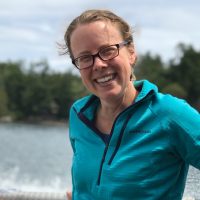 Dissertation Description
Dissertation Description
This work explored where and when we find salmon and their close relatives reproducing in a large Washington State river system, and whether those patterns are changing over time. Migration patterns between freshwater and saltwater and among generations in the same river system were also assessed.
What is your best/favorite memory during your time in SAFS?
Fieldwork with the Alaska Salmon Program – so many putrefying sockeye carcasses to be mined for otoliths, such an incredible long-term dataset, and a gorgeous place to be.
What was your favorite FISH class and why?
Maybe not at the time… but in retrospect I appreciate Hot Topics for plunging me into fisheries science with a breadth I never subsequently achieved in my coursework or research. Great background and immersion in literature and reasoning for someone who’d been out of science for a while!
What is your go-to comfort food?
Cereal and blueberries
Do you have any accomplishments and activities while at SAFS you would like to highlight?
Shout out to the creators of the Outreach to Diverse Audiences 5-teen class with me – Isadora Jimenez, Katie McElroy, Sean Rohan, Yaamini Venkataraman
Who would you like to thank/recognize and why?
Isadora Jimenez, for always striving to make SAFS a more welcoming and inclusive institution of excellent science.
Thiago Couto
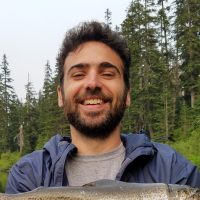 Dissertation Description
Dissertation Description
There is a general perception that small hydropower dams have low environmental impacts, which is implied in recent incentive policies and regulations for the sector. I examined the ecological effects of small dams on river ecosystems in Brazil and their potential for promoting cumulative changes to river connectivity, habitat loss, and water quality. Overall, I found that the individual and cumulative ecological effects of small dams are potentially high, highlighting the need for adequate environmental policies and strategic planning for the sector.
What is your best/favorite memory during your time in SAFS?
Spending time with friends sampling in the river was definitely the best part.
What was your favorite FISH class and why?
Beautiful Figures in R. It was very entertaining to spend hours improving my figures. I learned a lot.
What is your go-to comfort food?
Sushi
Do you have any accomplishments and activities while at SAFS you would like to highlight?
Being awarded the Early Career National Geographic Grant, the Rufford Small Grant, and the CNPq full doctorate scholarship were important accomplishments.
Who would you like to thank/recognize and why?
My parents, my siblings, my wife, and my daughter. They gave me all the emotional support I needed during the long journey of the PhD. Also, Julian was a great mentor and friend.
Zach Koehn
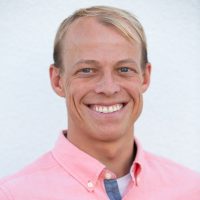 Dissertation Description
Dissertation Description
Fish and shellfish are known to be nutrient rich, but these benefits are often not recognized in the aims by which we manage our fisheries. My dissertation sought to improve the connection between seafood production and healthful diets. It analyzed gaps in fishery and health policy, improved our understanding of the environmental impacts of nutrient rich foods, and assessed how we can improve the local seafood supply to low income, food insecure households on the US West Coast.
What is your best/favorite memory during your time in SAFS?
Working with K–12 teachers on climate change teaching materials in the Federated States of Micronesia. I also truly enjoyed the opportunity to connect with other students at SAFS and elsewhere after seminars like the Thursday seminars and at Fremont Brewing.
What was your favorite FISH class and why?
Tim Essington’s Ecological Modeling course. I am a humanities student (philosophy) by training, but Tim and Emma Hodgson (TA at the time) made the material so approachable that I began to envision how I could use more qualitative approaches in my PhD. I ended up taking all of SAFS’ quantitative courses and learned a new set of skills I hadn’t anticipated when I enrolled at UW.
What is your go-to comfort food?
Sardines, smoked fish, kale, and baguettes.. and good PNW beer.
What has been your favorite way to connect with friends and family during the COVID-19 quarantine?
Socially distant time on the coast.
Do you have any accomplishments and activities while at SAFS you would like to highlight?
Beyond publishing peer-reviewed articles and an FAO technical report, a contribution I am most proud of was the work in developing climate change focused/interactive teaching materials with K–12 teachers in Micronesia. It was an incredible experience.
Who would you like to thank/recognize and why?
My cochairs for supporting my interests even though they weren’t a primary focus of research at SAFS. Eddie and Ray not only helped me to identify and apply for funding, but provided support for me to travel to conferences, and to research organizations, all over the world. Due to their trust in my work, I was also able to complete work from California, where my partner lives. Thanks to my funders, including the NSF-IGERT Program on Ocean Change, the Seafood Industry Research Fund, and the UW Population Health Initiative. I also would especially like to thank the NSF-IGERT Program on Ocean Change team based at SMEA (Terrie Klinger, Suanty Kaghan, Tiffany Dion) for the opportunities they provided for marine-focused students around the university. You provided SO MANY enriching experiences for us, and I am honored to have been an NSF-IGERT fellow. I also had such great mentors outside of the College of the Environment, especially Jen Otten at the School of Public Health. Thank you to the SAFS staff, especially Amy Fox for helping me maneuver funding challenges. A lot of people outside of UW supported me, especially the Seattle/PNW surf and paddle community. Finally, I need to thank my parents and my partner Myra for all their unwavering encouragement. <3
Benjamin Miller
Jane Rogosch
View previous SAFS graduating classes
###
Photo credits:
iStock.com/DaveAlan, iStock.com/eriktrampe & iStock.com/Jeffrey Lee






